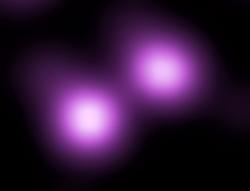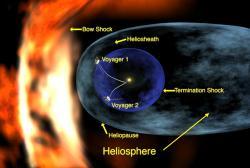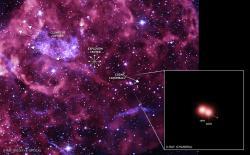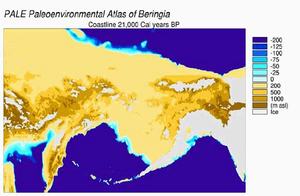Right in time for the festive season, ESA's XMM-Newton X-ray observatory has discovered a huge cloud of high-temperature gas resting in a spectacular nearby star-forming region, shaped somewhat like the silhouette of Santa Claus.
An early present for astronomers, the cloud suggests that hot gas from many star-forming regions leaks into the interstellar medium.
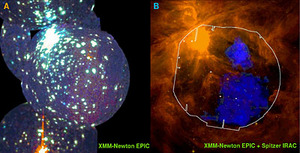
|
| ©Panel A: XMM-Newton EPIC (Guedel et al.), Panel B: AAAS/Science (ESA XMM-Newton and NASA Spitzer data)
|
The images show the Orion nebula with its hot gas cloud. The left panel is an image obtained with XMM-Newton data from its European Photon Imaging Camera (EPIC) in X-rays.
The right panel shows XMM-Newton data, compared to Spitzer observations of the same region. The Spitzer image is a composite image of data obtained in the infrared.
The Orion nebula is the nearest dense star-forming region to Earth that contains stars much more massive than the Sun. XMM-Newton's newly-discovered gas cloud is composed of winds blowing from these high-mass stars that are heated to millions of degrees as they slam into the surrounding gas.
|
The Orion nebula is the nearest dense star-forming region to Earth that contains stars much more massive than the Sun. XMM-Newton's newly-discovered gas cloud is composed of winds blowing from these high-mass stars that are heated to millions of degrees as they slam into the surrounding gas.
